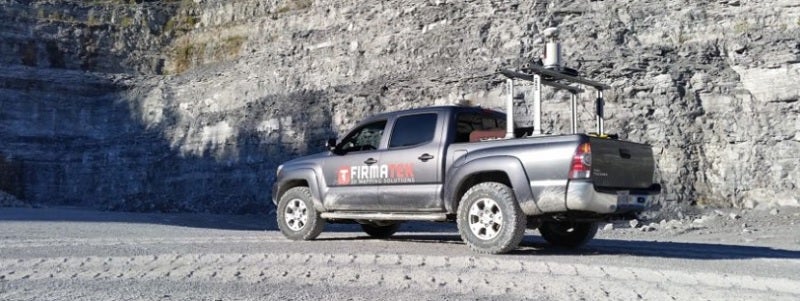
At Firmatek, we are always looking for new ways to help clients solve problems. One client recently approached us about finding a better way to identify joint sets. The process is historically done by visual inspection. We do many different types of work where we transform 3D scan data into analytics and reports that assist in mine and pit planning for our clients. So when the client approached us about creating this new deliverable, we were excited about the opportunity.
By examining joint set orientation, Firmatek helps our mining clients increase productivity, reduce waste, and improve safety. According to project engineer, Kyle Houston, G.I.T., understanding joint set orientation in a quarry is a major factor in determining the preferred orientation of pit walls.
Joint sets and their importance
Geologic and tectonic activity cause tensile stresses which create systematic breaks and cracks in rocks. Often times, these breaks or cracks occur in parallel, evenly spaced groups called joint sets. Joint sets are an important piece of information for mine engineers and geologists who are working to create, monitor, and update mine plans.
It turns out that blasting along a pit wall that is oriented correctly to these joint sets is predictable and optimal. This increases the amount of material mined in a single blast while minimizing the volume of material needed to be excavated in the floor. With regards to safety, properly designed highwalls are also less likely to slough off.
The importance of joint sets to operational efficiencies and safety made this project a great fit for Firmatek. We love to work on projects that will provide insights to our clients, allowing them to make better business decisions and operate more efficiently.
Measuring and identifying joint sets
How do you safely identify joint sets without physically getting close to highwalls to measure joints and orientations? Firmatek uses LiDAR scanning technology to build a detailed 3D model. We can then use this model for measurements, determining patterns and orientation, and data visualization. We use the Reigl VZ 400 in combination with a Nikon D700 DLSR camera to collect a colourized point cloud. This technology can be deployed at a safe distance and results in an accurate and detailed 3D representation of the rock face. The colourization of the point cloud comes from the combination of the camera and the LiDAR scanner and is used to enhance data visualization.
After the data is gathered and prepped, Kyle uses 3D modelling software to analyze the point cloud. He looks for patterns in the data-sets, measures surfaces, and identifies significant groups of parallel surfaces (the joint sets).
In the final analysis, he plots the measurements and orientation of the various joint sets on a rose diagram. The results are superimposed on a geospatially accurate map of the quarry site.
New projects, new deliverables, better business intelligence for clients
Mining engineers need to have a clear and accurate understanding of joint set orientation so that they can design blasting and pit progression to occur at specific angles to that orientation.
Our team of expert mining engineers and geologists understand our client’s needs. This joint set mapping project is just one example of how we partner with clients on new projects and new technology to bring them information that gives them better business intelligence. Then they can go on to improve their operations. It’s another example of our services led and technology-enabled approach.

